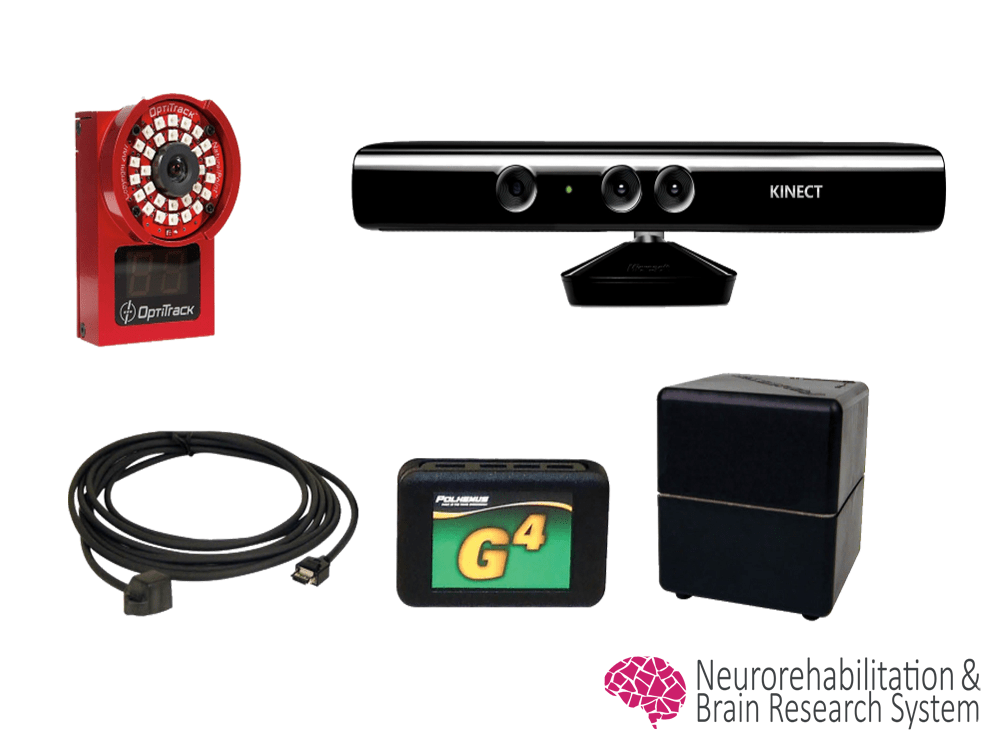Technological research
Technological research oriented toward engineering disciplines has developed tools, equipment and procedures that have helped to overcome some limitations of traditional approaches and even have provided solutions to specific problems.
Most of our studies involve the application of new technologies, such as (but not only) virtual reality, to old problems in neurorehabilitation and basic neuroscience. However, we have put special efforts on examining the characteristics of the technological solutions and how it affects to the users’ performance, and, although it is not our goal, we have also developed technology-driven solutions to overcome specific problems that we have faced in our research.
Walking in virtual reality
Even though virtual reality is increasingly used in rehabilitation, the implementation of walking navigation in virtual reality still poses a technological challenge for current motion tracking systems. Different metaphors simulate locomotion without involving real gait kinematics, which can affect presence, orientation, spatial memory and cognition, and even performance. All these factors can dissuade their use in rehabilitation. To make walking in virtual reality a reality we designed a marker-based head tracking solution that estimates the location of the head in a room-size environment from the position of fiducial markers attached to the ceiling.
A feasibility study was conducted to determine the accuracy, the jitter, and the lag of the tracking system and its elicited sickness and presence in comparison of a CAVE system.1 The accuracy and the jitter around the working area at three different heights and the lag of the head tracking system were analyzed. In addition, forty-seven healthy subjects completed a search task that involved navigation in the walking virtual reality system and in the CAVE system. Navigation was enabled by natural locomotion in the walking virtual reality system and through a specific device in the CAVE system. An HMD was used as display in the walking virtual reality system. After interacting with each system, subjects rated their sickness and their presence. Better performance was registered at higher heights, where accuracy was less than 0.6 cm and the jitter was about 6 mm. The lag of the system was 120 ms. Participants reported that both systems caused similar low levels of sickness. However, ratings showed that the walking virtual reality system elicited higher sense of presence than the CAVE system.
The marker-based solution provides accurate, robust, and fast head tracking to allow navigation in the virtual reality system by walking without causing relevant sickness and promoting higher sense of presence than CAVE systems, thus enabling natural walking in full-scale environments, which can enhance the ecological validity of virtual reality-based rehabilitation applications.
Motion tracking systems
Motion tracking systems are commonly used in virtual reality-based interventions to detect movements in the real world and transfer them to the virtual environment. There are different tracking solutions based on different physical principles, which mainly define their performance parameters. However, special requirements have to be considered for rehabilitation purposes. We compared the accuracy and jitter of three tracking solutions (optical, electromagnetic, and skeleton tracking) in a practical scenario and analyzed the subjective perceptions of 19 healthy subjects, 22 stroke survivors, and 14 physical therapists.2

With regards to the objective parameters, a practical scenario was designed to consider the effect of distance in the tracking performance. A 6 × 6 grid with 25 cm × 25 cm squares was designed and printed on a plastic sheet that was fixed to the floor, covering an area of 1.5 m2. The right ankle joint (tibiotalar) of an experimenter was fixed in all the intersection points of the grid (49 in total) using a cast. The position of the joint was estimated by the different tracking systems during 5 s.
With regards to the subjective parameters, three different configurations of a virtual reality-based system with a stepping exercise3 (see Balance) using the three different tracking systems were installed in the physical therapy area of a neurorehabilitation unit in a large metropolitan hospital. The experiences with the three tracking systems of healthy individuals, individuals with stroke, and therapists were collected through two ad-hoc questionnaires.
The optical tracking system provided the best accuracy while the electromagnetic device provided the most inaccurate results. However, this tracking solution provided the best jitter values, in contrast to the skeleton tracking, which had the worst results. Healthy individuals and professionals preferred the skeleton tracking solution rather than the optical and electromagnetic solution (in that order). Individuals with stroke chose the optical solution over the other options. Our results show that subjective perceptions and preferences are far from being constant among different populations, thus suggesting that these considerations, together with the performance parameters, should be also taken into account when designing a rehabilitation system.
References
- Borrego A., Latorre J., Llorens R., Alcañiz M., Noé E. Feasibility of a walking virtual reality system for rehabilitation: objective and subjective parameters. Journal of NeuroEngineering and Rehabilitation, 2016. In press
- Llorens R., Noé E., Naranjo V., Borrego A., Latorre J., Alcañiz M. Tracking Systems for Virtual Rehabilitation: Objective Performance vs. Subjective Experience. A Practical Scenario. Sensors, 2015, 15(3), 6586-6606.
- Llorens R., Gil-Gómez J., Alcañiz M., Colomer C., Noé E. Improvement of balance using a virtual reality based stepping exercise: a randomized controlled trial involving individuals with chronic stroke. Clinical Rehabilitation, 2015. 29(3):261-8.

